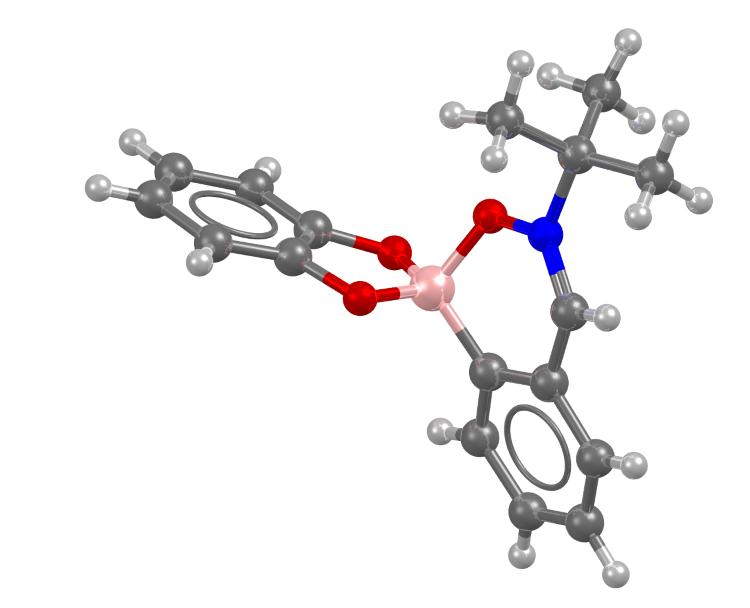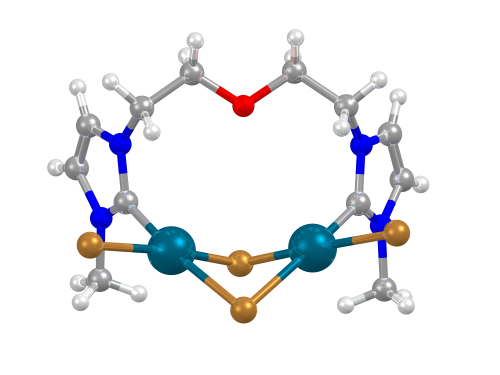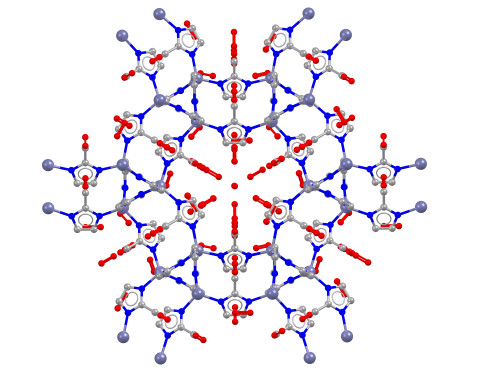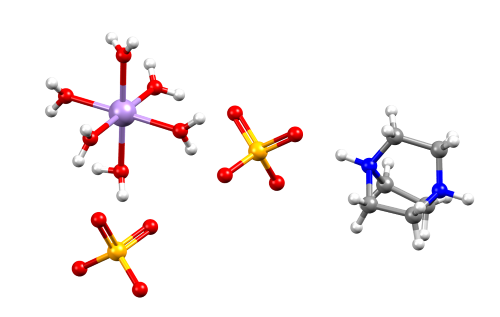2018 CSD Data and Software Updates
Here we describe the data and software updates provided for CSD users in 2018.
The Cambridge Structural Database Data Update – August 2018
Announcing the Aug 2018 data update of the Cambridge Structural Database
(CSD)! The CSD is the world’s repository of experimentally determined organic
and metal-organic crystal structures which is continually updated with new structures
and with improvements to existing entries, keeping you fully informed of the latest
research. This data update brings you 10,950 new entries and the total size of
the CSD to just over 960,000.
Our newly released CSD Statistics
page shows the CSD in
numbers. Here you can find lots of interesting stats; including Top Journals,
Top Authors and see that the number of unique structures in the CSD has just passed
940,000 (unique crystallographic data collections, not including
republications). We’re approaching the one millionth
structure! The trend suggests we’ll get there about July 2019, so
get ready to celebrate, it might be your structure that’s the
millionth!

CSD refcode PATXEQ
(https://dx.doi.org/10.5517/ccdc.csd.cc1p8hq5)-
the 900,000th entry added to the CSD
CSD refcode QIBPUP
(https://dx.doi.org/10.5517/ccdc.csd.cc1q9b7l)
is an entry in the Aug data update. This structure was published by our Top
Author of the Year, B.W.Skelton and in our Top Journal of the Year, Dalton Trans.
(http://dx.doi.org/10.1039/C8DT00945G).
The entry is also one of the 167,238 that has been enriched with melting point physical
property information.
CSD refcode QIBPUP
(https://dx.doi.org/10.5517/ccdc.csd.cc1q9b7l)
This data update also comes with our third software
update of 2018, you can find out more about this in our latest blog post –
“CSD updates: Hitting our
stride”.
Let us know if you have any feedback or questions
about the latest software and data update. Our next release will be available
before the end of the year, consisting of the latest data update and the 2019 CSD
software. As always, we are available via e-mail at support@ccdc.cam.ac.uk or through our CCDC social
media channels (Facebook, LinkedIn and Twitter).
The Cambridge Structural Database Data Update – May 2018
We are delighted to announce the release of the May 2018 data update of the
Cambridge Structural Database (CSD). With 14,411 new entries, this update rather
excitingly brings the total size of the CSD to over 950,516 entries.
This update contains over 900 CSD
Communications, these structures are given a citable DOI, links from third
party repositories and indexes such as the Clarivate Data Citation Index and of course
get a thorough review by our expert Scientific Editorial Team before entering the
CSD. A recent example is this di-palladium complex featuring bridging bromide
and chelating N-heterocyclic carbene ligands, published by Brian Skelton and
co-workers.

Visualisation of di-palladium complex
(CSD refcode BEVCAJ, https://dx.doi.org/10.5517/ccdc.csd.cc1z94v8)
We have once again also updated our
subset of Metal-Organic Framework (MOF) structures. The subset now contains an
extra 1,584 entries taking the current total to over 88,000. One of the structures added
was published by Claire Hobday and co-workers as part of a study of gas adsorption
behaviour of ZIF-8 is shown below.
 Visualisation of ZIF-8 with
Visualisation of ZIF-8 with
O2 in the adsorption sites (CSD
refcode NIFSED, https://dx.doi.org/10.5517/ccdc.csd.cc1q0hs0)
Once again alongside this data update we are releasing an update of the
associated software, you can find out more at
our blog post.
The Cambridge Structural Database Data Update – February 2018
We are delighted to announce the release of the February 2018 data update of
the Cambridge Structural Database (CSD). With 20,004 new entries, this update brings the
total size of the CSD to over 936,000 entries.
The data update contains over 4,500 entries published in 2018, demonstrating
that your CSD database is up to date with the most recently-published structures. This
includes a highly unusual quintuple[6]helicene recently reported in Angewandte Chemie
International Edition, which was shown to adopt a C5-symmetric
propeller-shaped structure.
![Propeller-shaped structure of quintuple[6]helicene, CSD refcode METDIB](/media/blog/2018-csd-data-software-updates/METDIB_website_size.png)
Propeller-shaped structure of
quintuple[6]helicene (CSD refcode METDIB, https://dx.doi.org/10.5517/ccdc.csd.cc1q8fjy)
The update spans organometallic, metal-organic and organic structures providing
a wealth of information useful for a wide range of chemistry interests. All entries have
been enhanced and validated at the CCDC to provide high quality results you can trust.
An example of this can be seen in the database entry of a manganese-selenate complex
which includes additional information showing the structure to be an ordered low
temperature polymorph that undergoes a reversible phase transition.

Structure of the low temperature
polymorph of a manganese-selenate complex (CSD refcode
JEMYOS, https://dx.doi.org/10.5517/ccdc.csd.cc1n9szq)
Alongside this data update we are also releasing an update of the associated
software. To find out more about the software update and our move towards more frequent
releases for desktop software see the More Frequent CSD Software Releases blog
post.
Installing the updates
The CSD software suites have a built-in auto-update mechanism that makes
updating the data and software easy and will also notify you if an update is available.
More information is available via our Support section
If you would prefer to download and install an update manually, then all of our
updates are also made available via the ‘Data & Software Updates’ section of
our Downloads page.